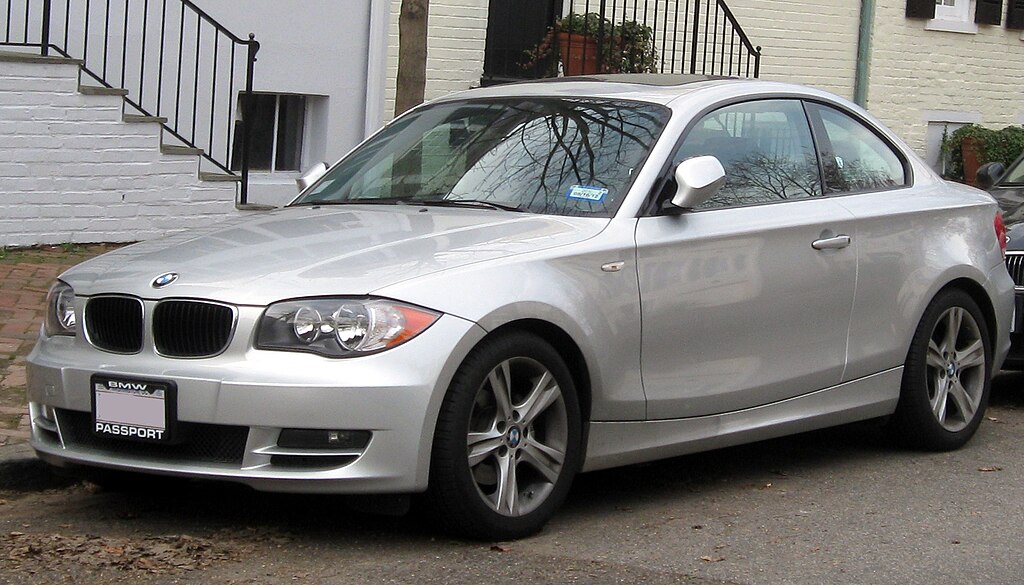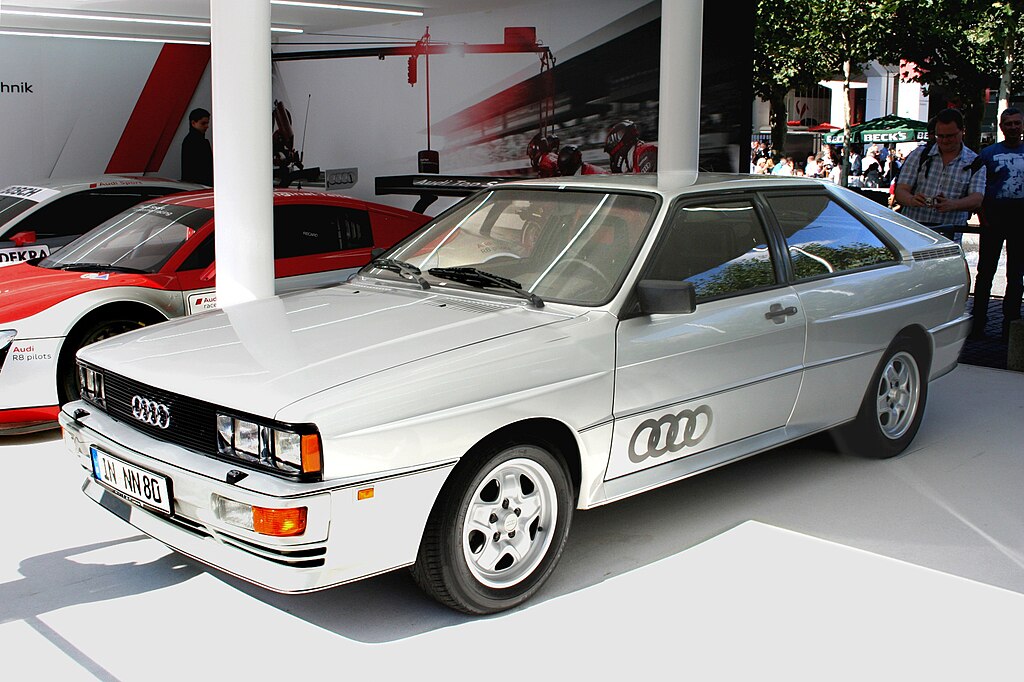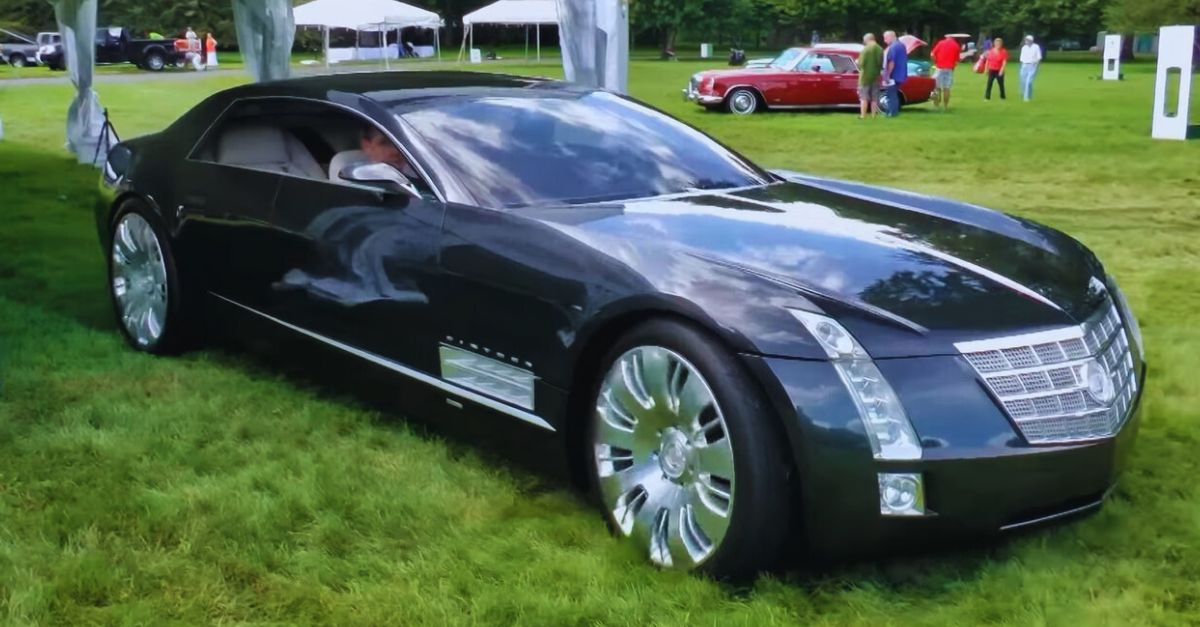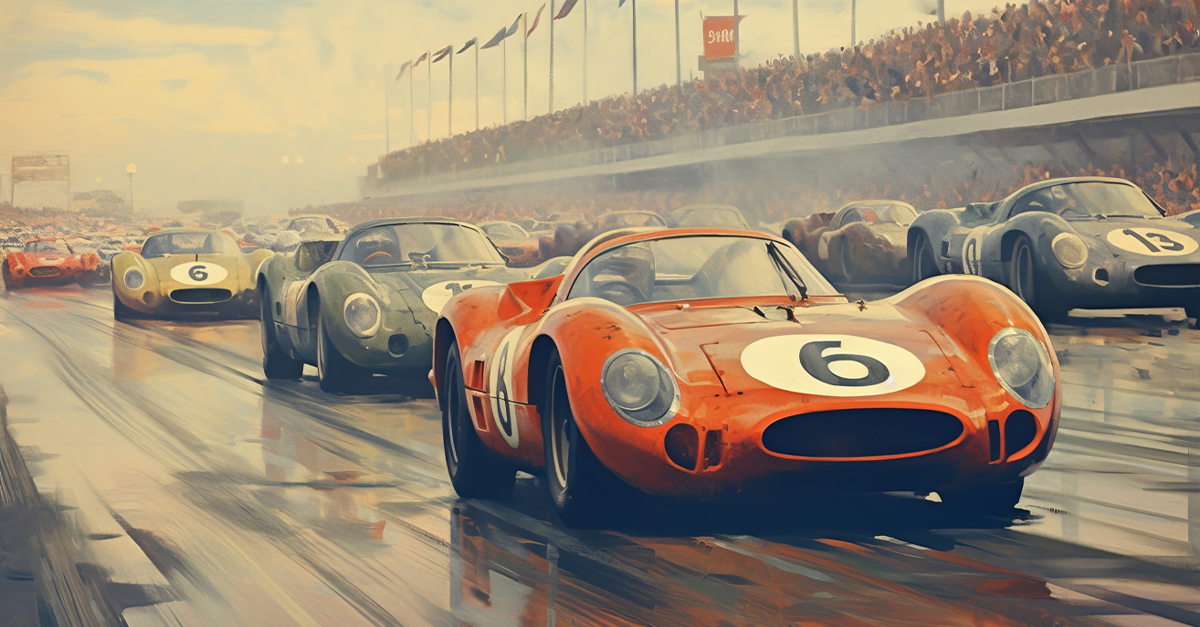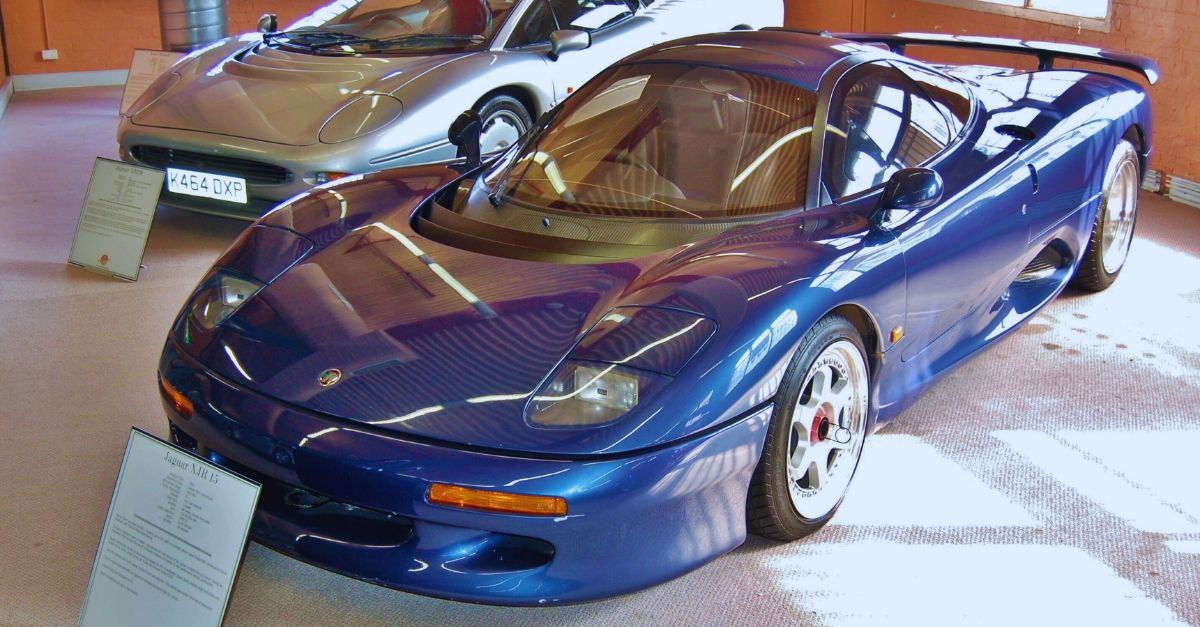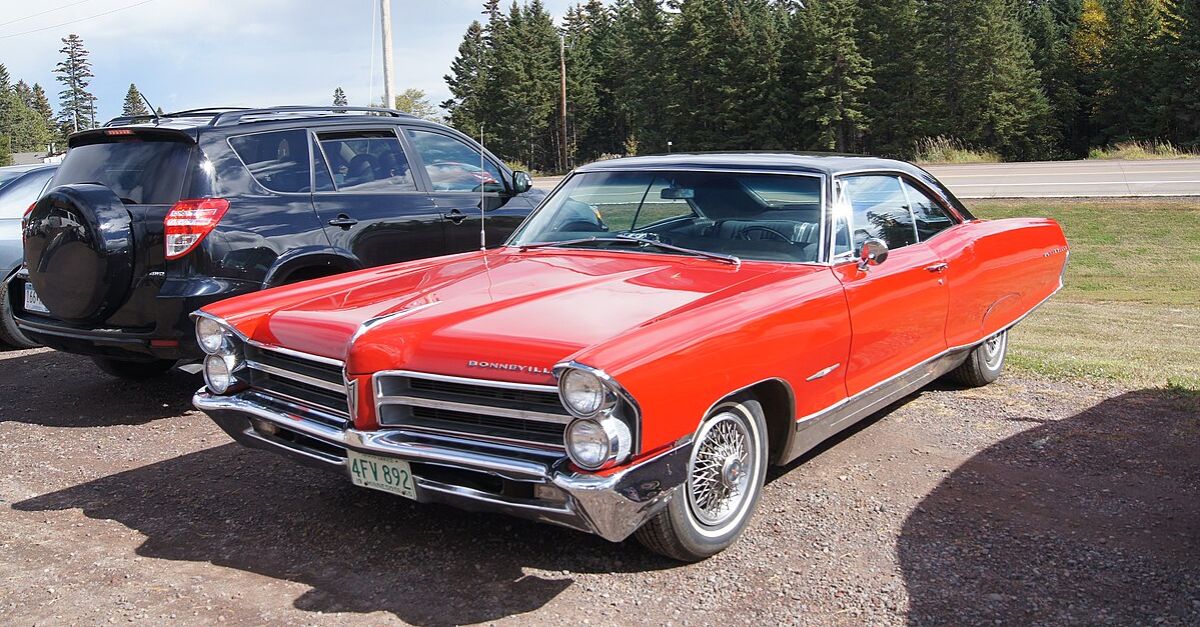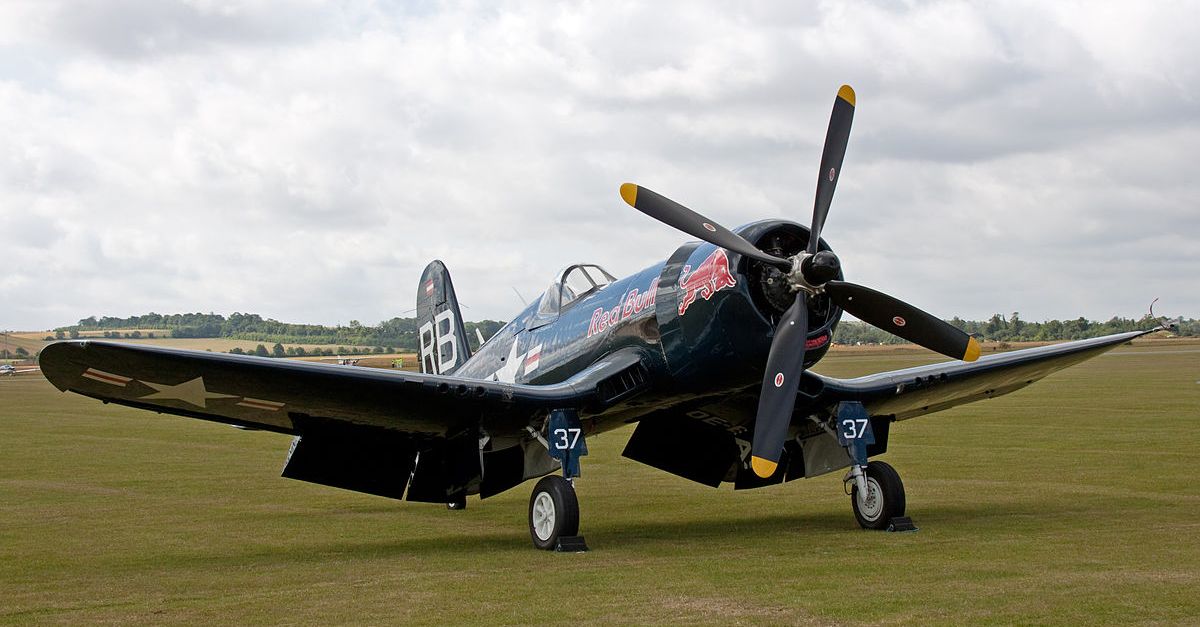Der Beste Automobiles To Ever Come Out Of Germany
Germany has been in the car business since 1886, when Carl Benz introduced the Benz Patent-Motorwagen, a three-wheeled bicycle-like vehicle powered by a four-stroke engine. Although unrecognizable as a car by today's standards, in the late 19th century, Benz's groundbreaking invention was widely considered the first motor-powered vehicle and a precursor to Henry Ford's history-changing Ford Model T. Here are some of the most iconic cars ever to come out of Germany.

The World's First Car
We have to start at the beginning, with Carl Benz and his 1886 Benz Patent-Motorwagen. Carl Benz had a lifelong hobby as a machinist and eventually founded Benz & Companie Rheinische Gasmotoren-Fabrik, a gasoline engine manufacturing business. This led him to design the Ben Patent-Motorwagen. With three wire wheels, a chain rolling system for transferring power to the rear wheels, a steering wheel, and a four-stroke engine between the two rear wheels, Benz's creation was called "a car powered by gas".
 Siegener Zeitung, Wikimedia Commons
Siegener Zeitung, Wikimedia Commons
1886 Benz Patent-Motorwagen (Cont'd)
Despite receiving his patent, Carl Benz still had to prove that his design worked. The first road test of the car took place on July 3, 1886 in Mannheim, Germany, where Benz publicly drove the car to a top speed of 10 mph. Three years later, Benz introduced the Model 3 Motorwagen, which had wooden wheels. In 1888, Benz began to sell the vehicle, making it the first commercially available automobile ever.
 Alonso de Mendoza, Wikimedia Commons
Alonso de Mendoza, Wikimedia Commons
The Iconic BMW 1 Series
The BMW 1 Series, referred to by their "E" designation in Europe, was released in 2004 as an "entry-level" BMW—a brand famous for producing high-end luxury coupés and sedans. The E82 was one of their most popular entries: a two-door coupé featuring a 1.6L inline-four cylinder engine that produced 306 hp and gave the classic coupé a top speed of 155 mph.
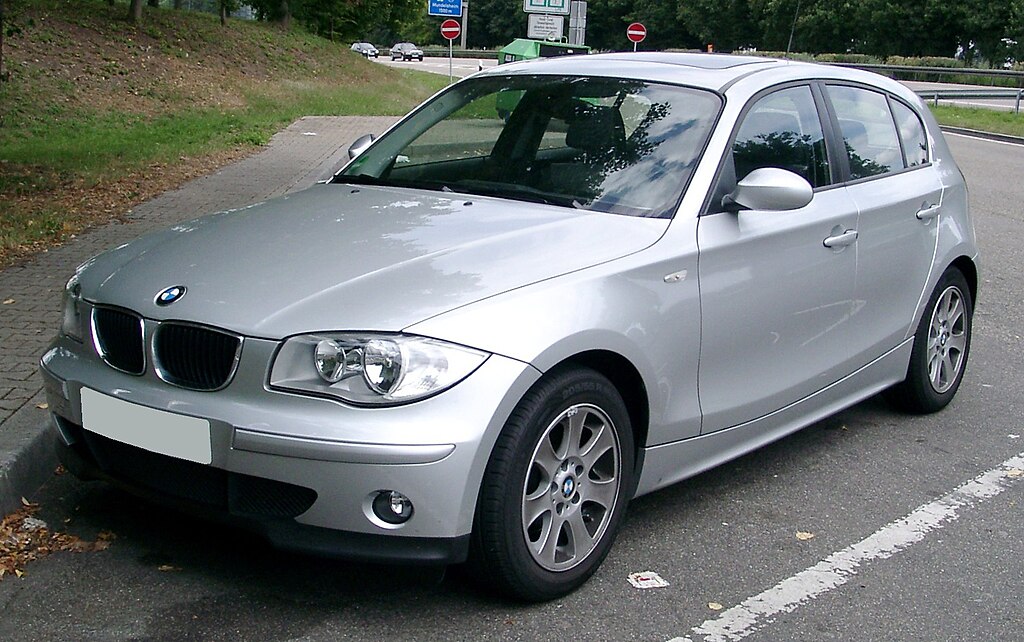 Rudolf Stricker, Wikimedia Commons
Rudolf Stricker, Wikimedia Commons
The 1 Series M Coupé
The 1 Series M Coupé was the high-performance model of the E82, released in 2011. It featured an upgraded twin-turbocharged engine that produced 335 hp. It was the third most popular car of the year in 2011, according to Evo magazine, and was the favorite car of the year for Richard Hammond, of British show Top Gear. BMW produced the ActiveE in 2012, another derivative of the uber-popular E82, but with an all-electric engine.
Audi RS-7
A precursor to Will Smith's RS8 used in I Robot (2004), the RS-7 has been dubbed the "family car with supercar specs", as it packs a twin-turbocharged V8 engine that produces 560 hp, taking it to a huge top speed of 190 mph and from 0 to 60 in just 3.3 seconds. Adopting a "low and long" profile, the RS-7's beauty isn't just under the hood.
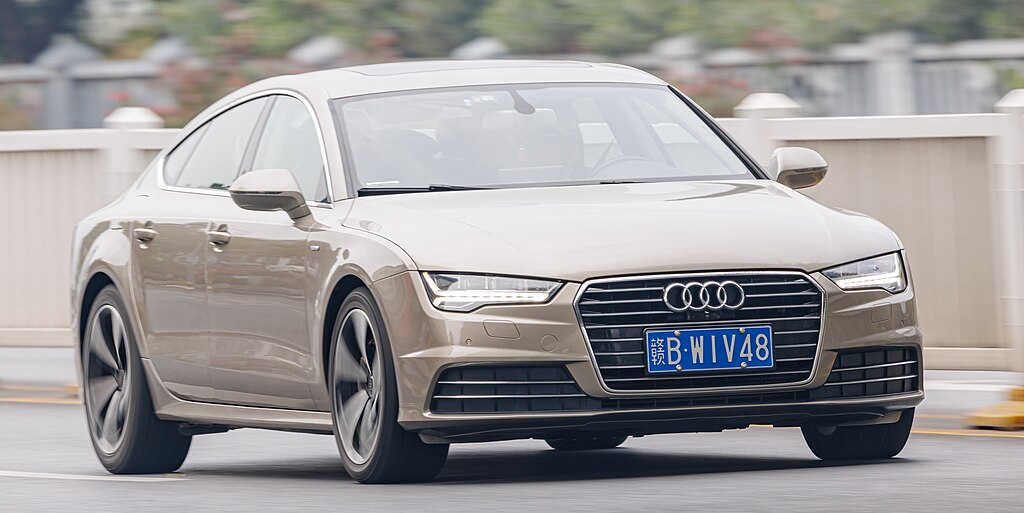 Dinkun Chen, CC BY-SA 4.0, Wikimedia Commons
Dinkun Chen, CC BY-SA 4.0, Wikimedia Commons
Audi RS-7 (Cont'd)
The estate car for the ages features a stunning all-leather interior with room for two rear-seat passengers, with the middle seat removed to make way for a center console. The bucket-like design of the Audi's "Sport Seats" give you the race car feel without the race car price.
 Alexander Migl, CC BY-SA 4.0, Wikimedia Commons
Alexander Migl, CC BY-SA 4.0, Wikimedia Commons
Porsche 356
Back in 1950, Porsche created a gorgeous, lightweight, and nimble sports car: the Porsche 356. It was the first-ever car produced by Porsche, with a slight V-shaped windshield and a long hood which covered a 1.6L four-cylinder engine producing just 59 hp. The earliest Porsches are some of the most sought after and paved the way for the iconic brand we know and love today.
 Reinhold Möller, CC BY-SA 4.0, Wikimedia Commons
Reinhold Möller, CC BY-SA 4.0, Wikimedia Commons
Porsche 356 (Cont'd)
An American importer named Max Hoffman became Porsche's only American importer, importing the "A" version of the original 356, but asked Porsche to redub it the "Continental" to appeal to American audiences. Unfortunately, Ford (who made the Lincoln Continental) sued Porsche for copyright infringement and the name was quickly withdrawn from the 1956 units onwards. This makes the 1955 Porsche 356 exceedingly rare and one of the most valuable to collectors today.
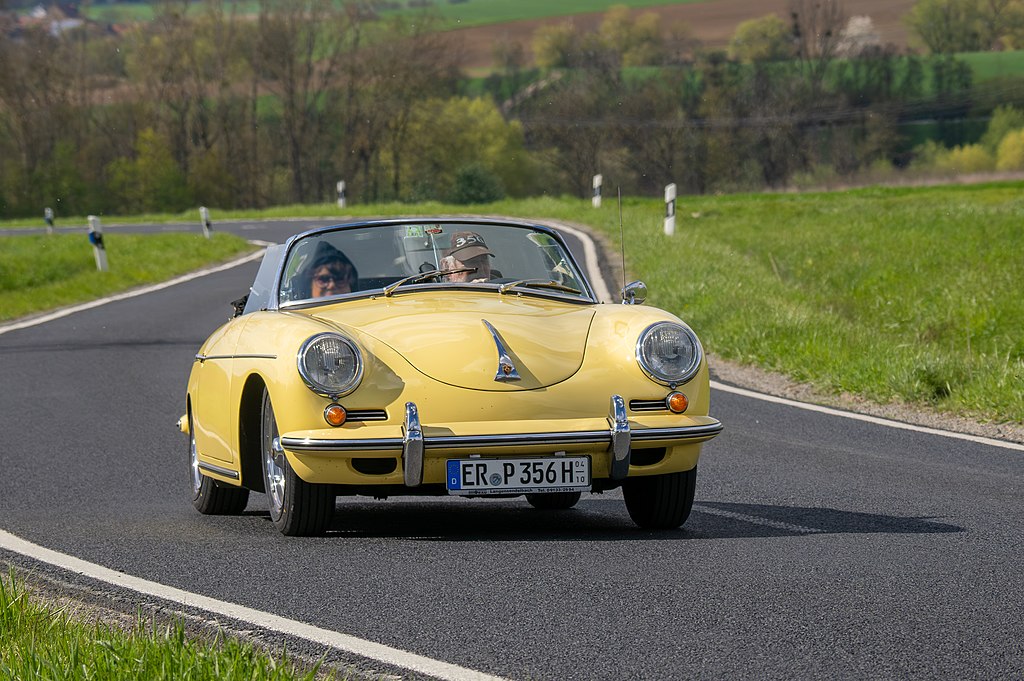 Ermell, CC BY-SA 4.0, Wikimedia Commons
Ermell, CC BY-SA 4.0, Wikimedia Commons
Volkswagen Beetle
One of the world's longest-running production cars, the Volkswagen Beetle was first produced in 1938 after being conceived as the "people's car" by a certain German dictator—he wanted something simple, cheap, and easy to mass-produce—enter the bug-shaped, two-door saloon. The Beetle featured a rear-located, four-cylinder 1311cc engine that produced less than 50 hp.
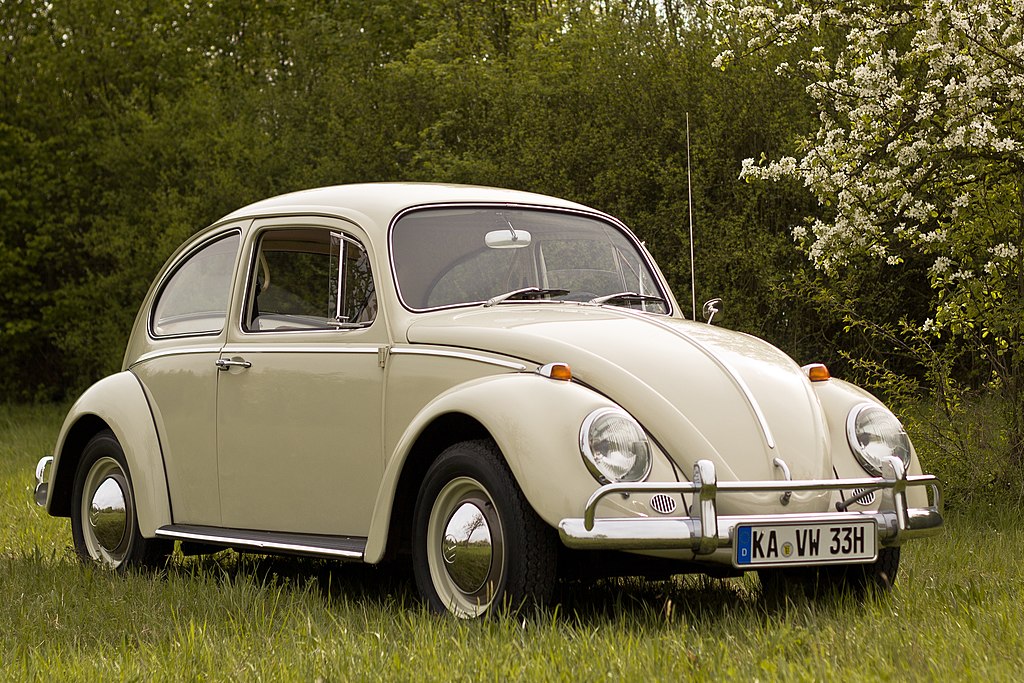 Vwexport1300, CC BY-SA 3.0, Wikimedia Commons
Vwexport1300, CC BY-SA 3.0, Wikimedia Commons
Volkswagen Beetle (Cont'd)
Unfortunately, the grand vision for the Beetle was put on hold thanks to World War II and production could only begin in earnest in December 1945. Volkswagen produced 45 vehicles in four days between December 27 and 31, 1945. In 1946 and 1947, production ramped up to a few thousand Beetles and the legendary car was up and running. Renowned today as a classic, the Beetle is the best-selling car of all time, with over 21.5 million produced.
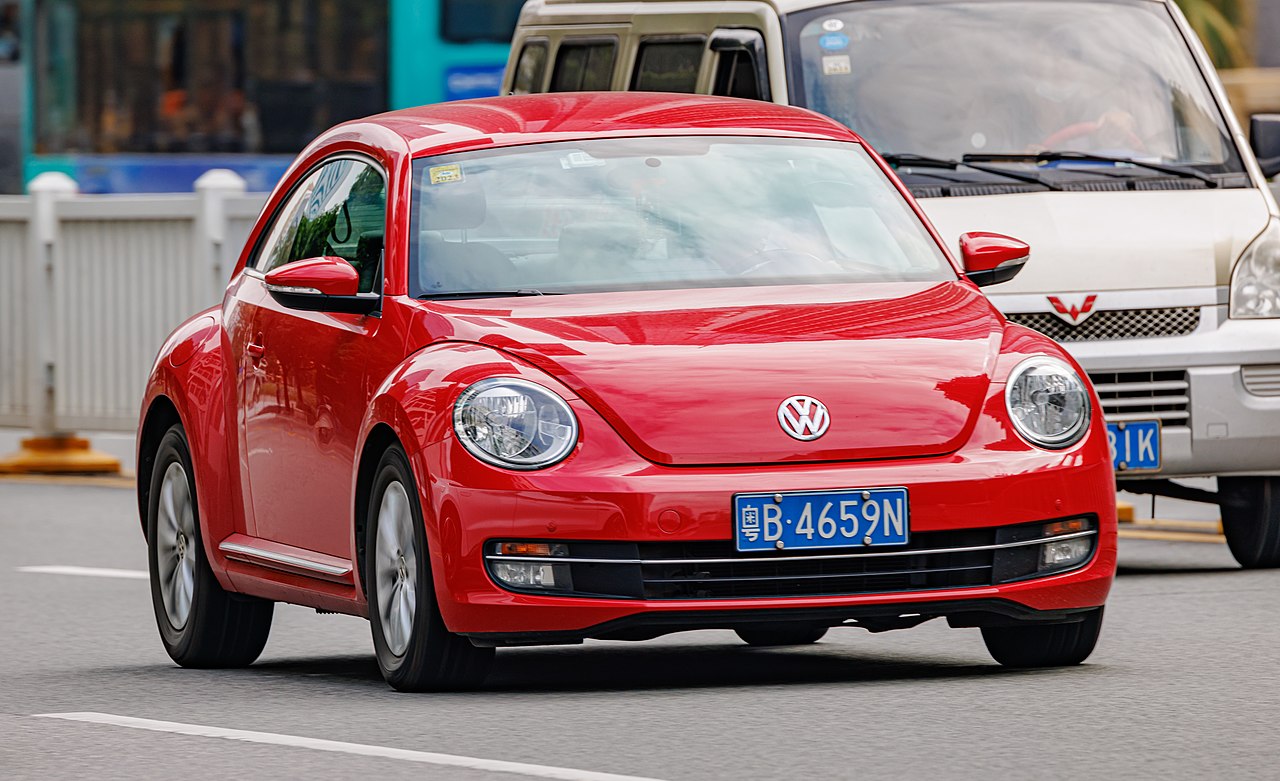 Dinkun Chen, CC BY-SA 4.0, Wikimedia Commons
Dinkun Chen, CC BY-SA 4.0, Wikimedia Commons
BMW 328
Another victim of the German war machine in World War II was BMW as, like all German car manufacturers, they were re-focused on producing military cars, parts, and weaponry. However, that's not before they produced 464 examples of the stunning BMW 328. The open-top sports car was produced between 1936 and 1940, powered by a 1.9L six-cylinder engine that produced an impressive top speed of 93 mph.
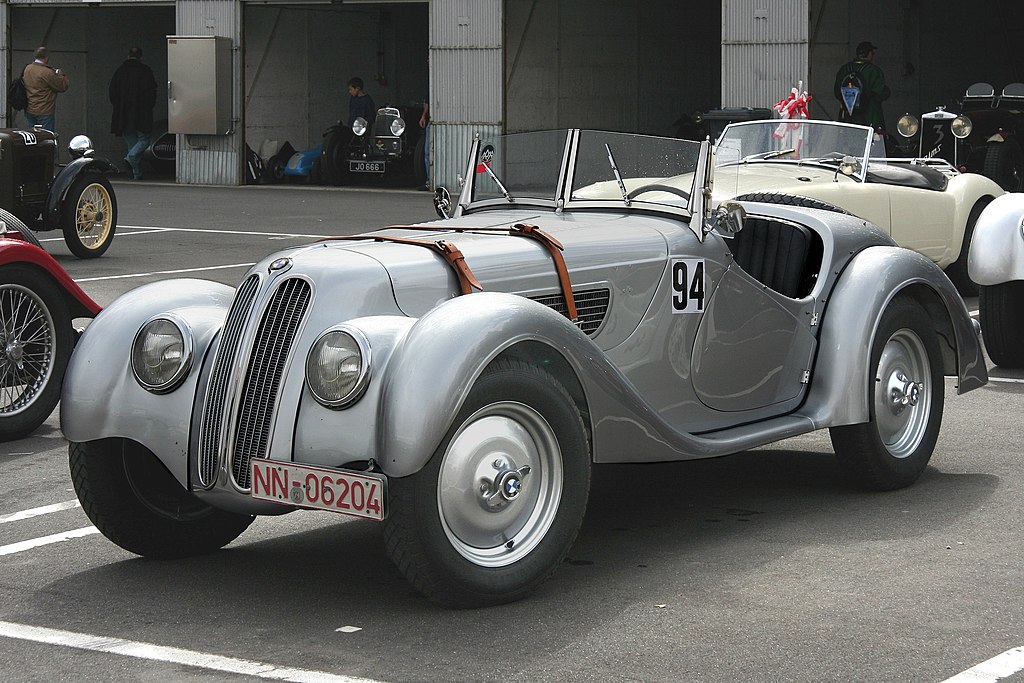 Lothar Spurzem, CC BY-SA 2.0, Wikimedia Commons
Lothar Spurzem, CC BY-SA 2.0, Wikimedia Commons
BMW 328 (Cont'd)
Although impressive under the hood, it's the exterior of the BMW that really shines. The narrow roadster was based on an aircraft design and had gorgeous curves throughout, with a "double kidney" grille and an open top that embodied Germany's pre-war attitude to motor vehicles and the freedom of the open road. It's quite simply a stunning piece of automotive artwork.
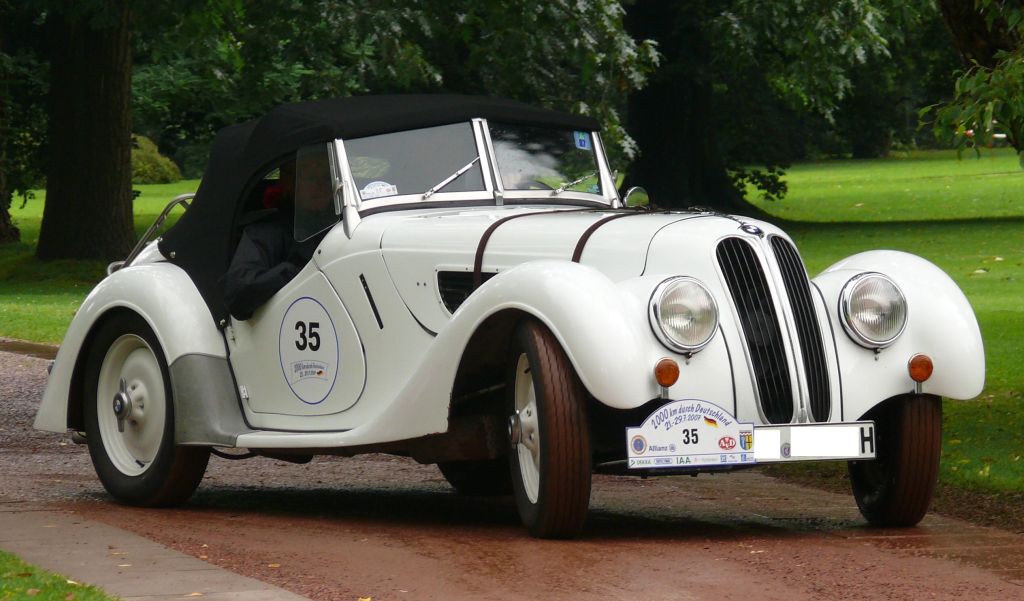 Stahlkocher, CC BY-SA 3.0, Wikimedia Commons
Stahlkocher, CC BY-SA 3.0, Wikimedia Commons
Mercedes Benz E-Class
First launched in 1953, the Mercedes-Benz E-Class is the marque's best-selling model, which includes icons like the W120, a stylish sedan that boasted a 1.8L four-cylinder engine that produced 55 hp and was widely used as German taxis throughout the 1950s, available in either a two-door or four-door model.
 Alexander Migl, CC BY-SA 4.0, Wikimedia Commons
Alexander Migl, CC BY-SA 4.0, Wikimedia Commons
Mercedes Benz E-Class (Cont'd)
Throughout the decades, the Mercedes Benz E-Class has been revamped a few times, with the 1970s and 1980s representing the most significant visual changes, as well as a total engine redesign. In 1984, the W124 became the new flagship E-Class model, with an all-wheel drive system, catalytic converters, diesel particulate filters, emission controls, and a new body style. The E-Class Mercedes have set the tone for German luxury vehicles since the 1950s and that doesn't show any signs of stopping.
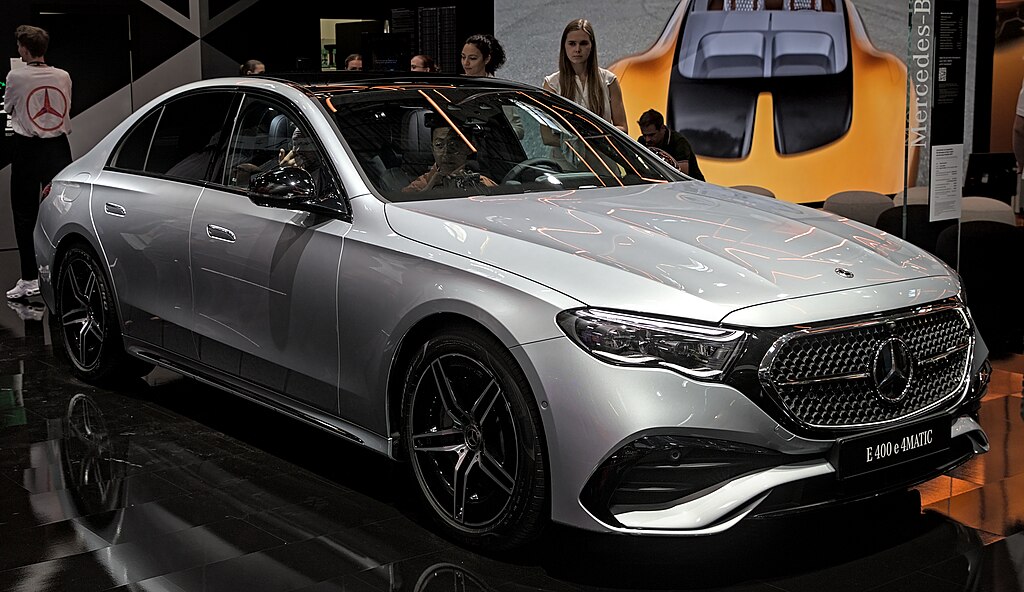 Alexander-93, CC BY-SA 4.0, Wikimedia Commons
Alexander-93, CC BY-SA 4.0, Wikimedia Commons
Volkswagen Golf GTI
The VW Golf GTI is another of Volkswagen's most popular compact cars. First produced in 1974, the Golf was a front-engine, front-wheel drive replacement for the hyper-successful VW Beetle. The first generation was a three-door hatchback and quickly became a best-seller. It's among the most popular Volkswagen models of all time.
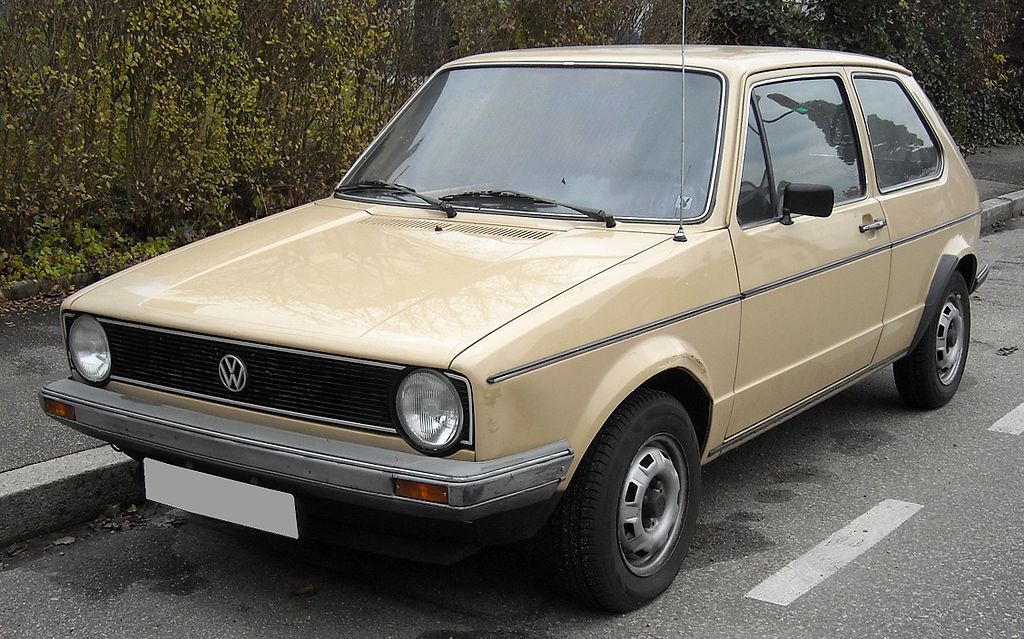 Rudolf Stricker, Wikimedia Commons
Rudolf Stricker, Wikimedia Commons
Volkswagen Golf GTI (Cont'd)
Sold as the Volkswagen Rabbit in the US, the Golf was significantly facelifted in 1991 with the third-generation release. It was made shorter, but had a new door added, and featured a new 2.8L VR6 engine that was incredibly fuel efficient, sporting 26 MPG. Named the European Car Of The Year for 1992, this stubby version of the Golf continues to be among the most popular today.
 Vauxford, CC BY-SA 4.0, Wikimedia Commons
Vauxford, CC BY-SA 4.0, Wikimedia Commons
Audi Quattro
The Audi Quattro was a revolutionary car. It changed the game in the 1980s when Audi introduced a four-wheel drive system for its rally cars, the first of its kind. It then went on to expand the new four-wheel drive system to its road cars. The Quattro also had an independent front and rear suspension, with a 2.1L five-cylinder engine with a turbocharger (the first car to have these features mated together). The Quattro produced 302 hp and had a top speed of 143 mph.
Audi Quattro (Cont'd)
Because of Audi's desire for this to be a revolutionary car, each one was partially hand-built on a dedicated line. In 1983, the Quattro was upgraded with an LCD electronic instrument cluster, replacing the old analog one. The Quattro's front and rear ends were fitted with a flat front grille and a small spoiler in the rear, along with a chrome-brushed Quattro decal. Audi sold 11,000 Quattros from 1980 to 1991.
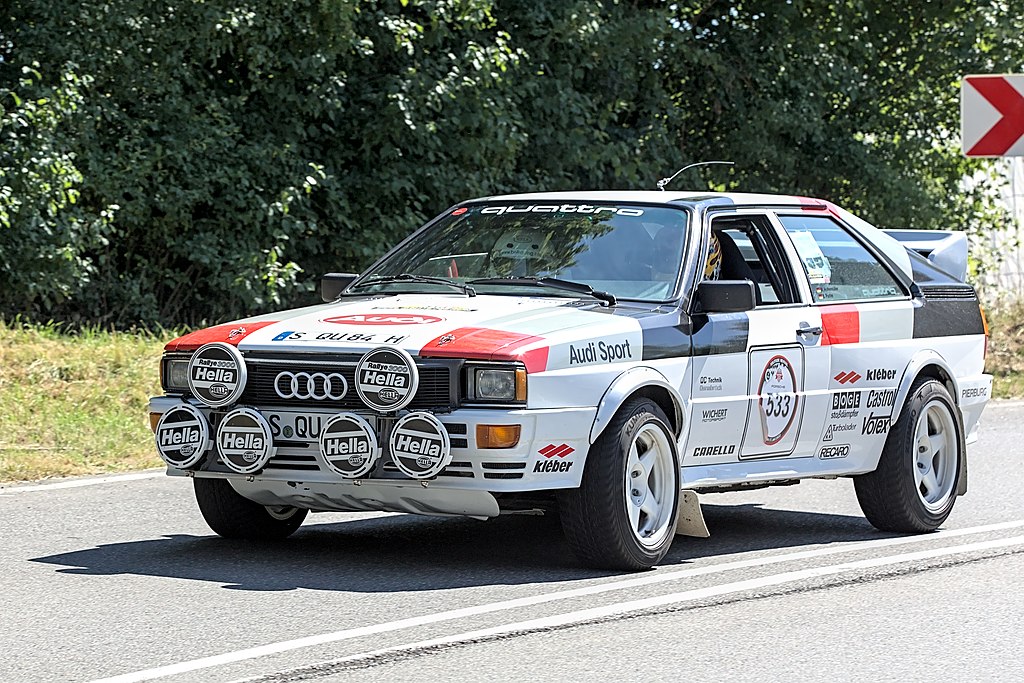 Alexander Migl, CC BY-SA 4.0, Wikimedia Commons
Alexander Migl, CC BY-SA 4.0, Wikimedia Commons
BMW M3 E30
The BMW M3 E30, produced in 1986, is a classic of the M3 line. Originally intended to meet racing rules as a homologation car, the E30 quickly took off among European sports car lovers. Featuring a 2.3 or 2.5L inline four-cylinder engine, the E30 could hit a top speed of 142 mph, producing 192 hp.
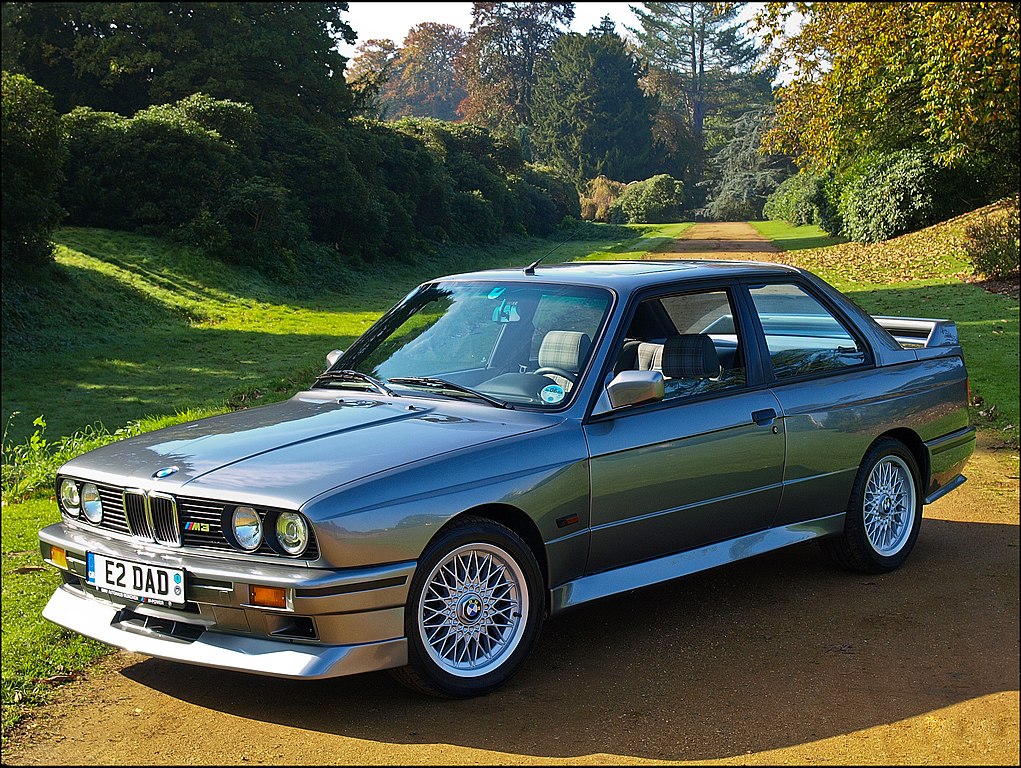 Darren, CC BY 2.0, Wikimedia Commons
Darren, CC BY 2.0, Wikimedia Commons
BMW M3 (Cont'd)
Despite being very popular when it was first released, the M3 E30 took about 20 years to be recognized for the great car that it was. Named in 2004 as one of the top six sports cars of 1980, it was again named as one of the greatest driver's cars of all time in 2007, this time by Automobile magazine. The E30 was also one of Paul Walker's favorite cars—he owned a red one.
 Vauxford, CC BY-SA 4.0, Wikimedia Commons
Vauxford, CC BY-SA 4.0, Wikimedia Commons
Mercedes-Benz 300SL
Another classic from Mercedes is the 300SL, famous for its gullwing doors. Produced between 1954 and 1957, the 300SL redefined sports car design in a few ways: the gullwing doors, the long hood, and sleek styling all added to the 1950s sports car boom that was taking over America. The design for the 300SL was suggested to Mercedes by American importer Max Hoffman, who noticed that Americans were clamoring for a sports car amid a booming economy.
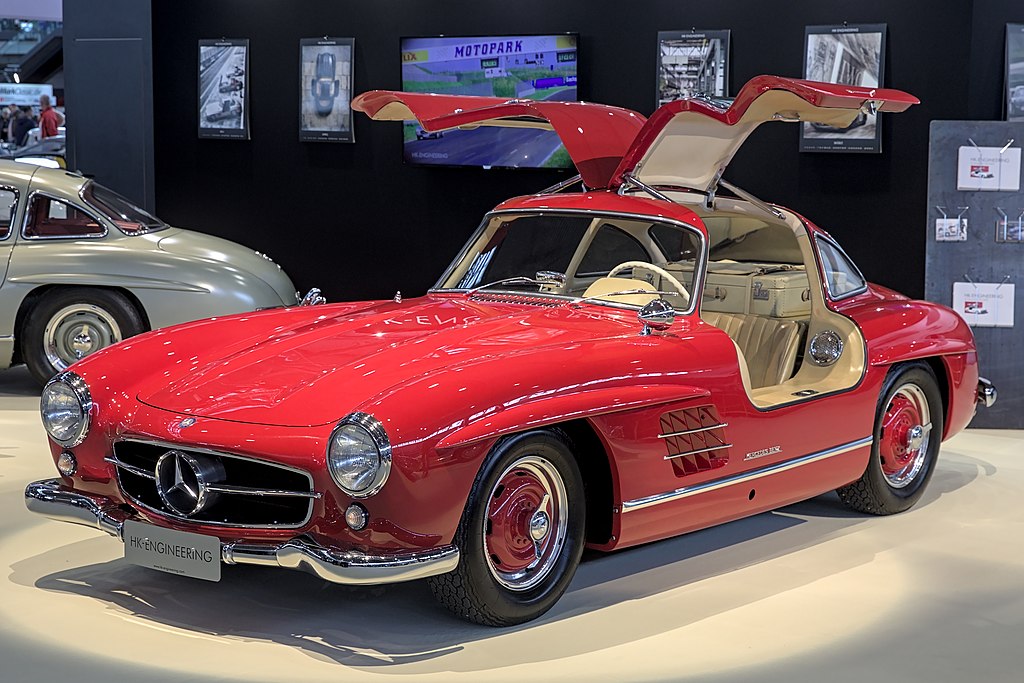 Alexander Migl, CC BY-SA 4.0, Wikimedia Commons
Alexander Migl, CC BY-SA 4.0, Wikimedia Commons
Mercedes-Benz 300SL (Cont'd)
Hoffman ordered 1,000 cars to be imported as a test run. The success was huge and Mercedes began producing the car in America in 1954. The body design of the 300 SL was "super leicht", or "super light", as it was produced from a magnesium alloy, inspired by the W194 racing car from 1951. Under the beautiful hood of the 300SL, a straight-six engine produced 215 hp and gave the car a top speed of 146 mph.
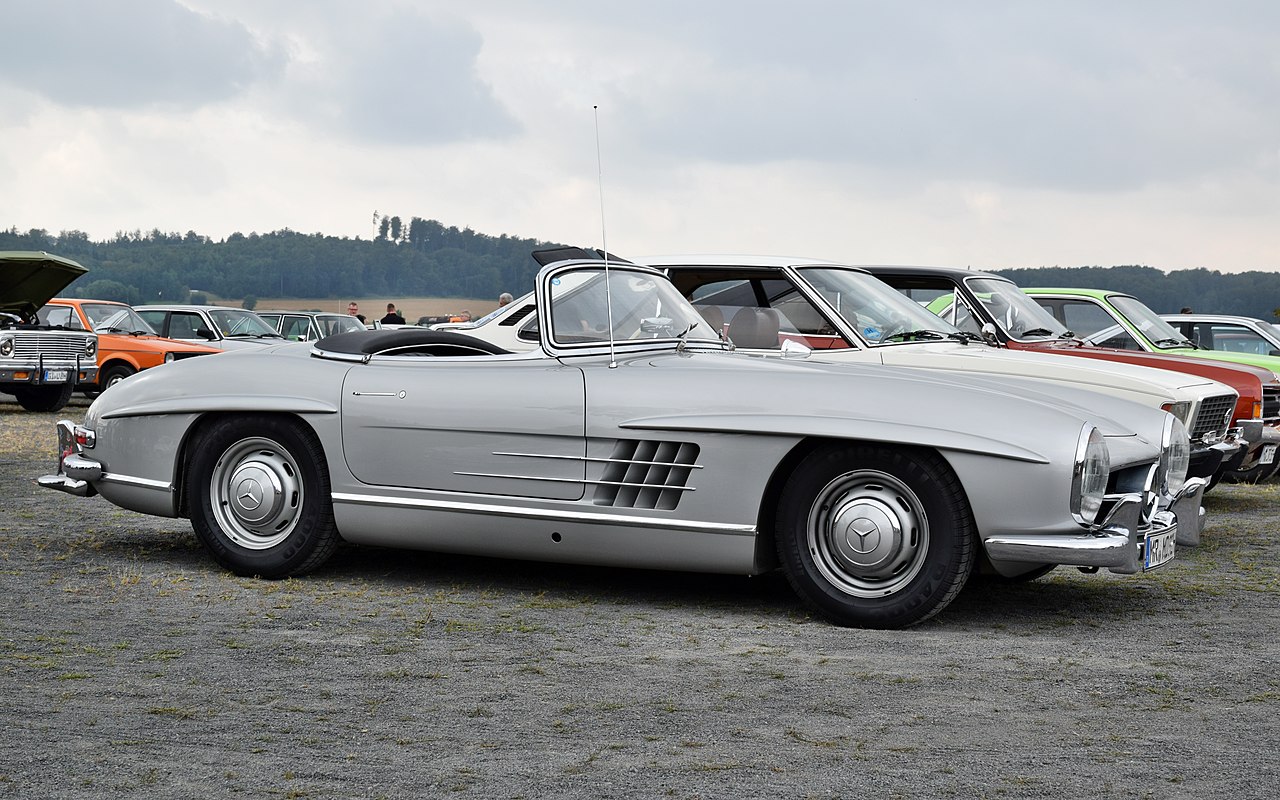 Hydro, CC BY-SA 4.0, Wikimedia Commons
Hydro, CC BY-SA 4.0, Wikimedia Commons
Mercedes-Benz AMG GT
While not a successor to the 300SL, one can't help but notice the design similarities with the 2014 AMG GT. Wider wheel arches, lower bodywork, and a sloping roofline greeted would-be owners of this 4.0L twin-turbocharged V8-engined sports car. Unfortunately, the AMG GT didn't include the gullwing doors of the 300SL, however it did adopt the long, thin "Panamerica"-style grille.
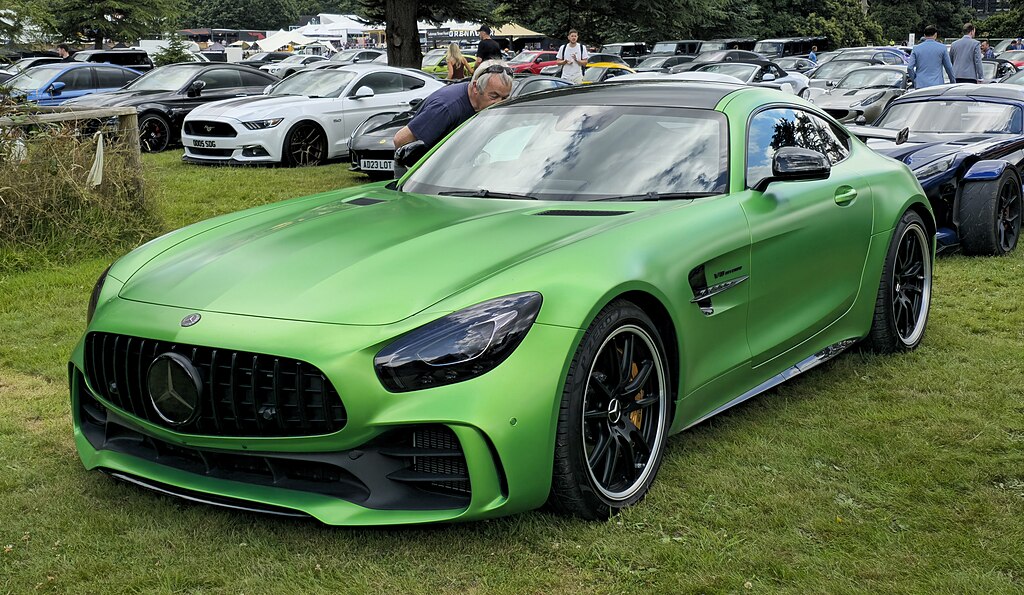 Calreyn88, CC BY-SA 4.0, Wikimedia Commons
Calreyn88, CC BY-SA 4.0, Wikimedia Commons
Mercedes-Benz AMG GT (Cont'd)
The AMG's powerful engine produces a staggering 456 hp that takes it from 0 to 60 in 4.4 seconds. Its top speed is an impressive 190 mph. Since 2024, a plug-in hybrid version of the AMG GT has been made available by Mercedes, featuring a 4.0L V8 engine that produces a monstrous 805 hp.
 Dinkun Chen, CC BY-SA 4.0, Wikimedia Commons
Dinkun Chen, CC BY-SA 4.0, Wikimedia Commons
BMW M4
A stunning replacement for the iconic M3, the M4 had big shoes to fill when it was released in 2014. It has a twin-turbocharged six-cylinder engine that produces a staggering 415 hp, taking you from 0 to 60 in 3.8 seconds. The M-Series rally racing days aren't forgotten either, as the Competition Package upgrade will increase the horsepower to 444 hp.
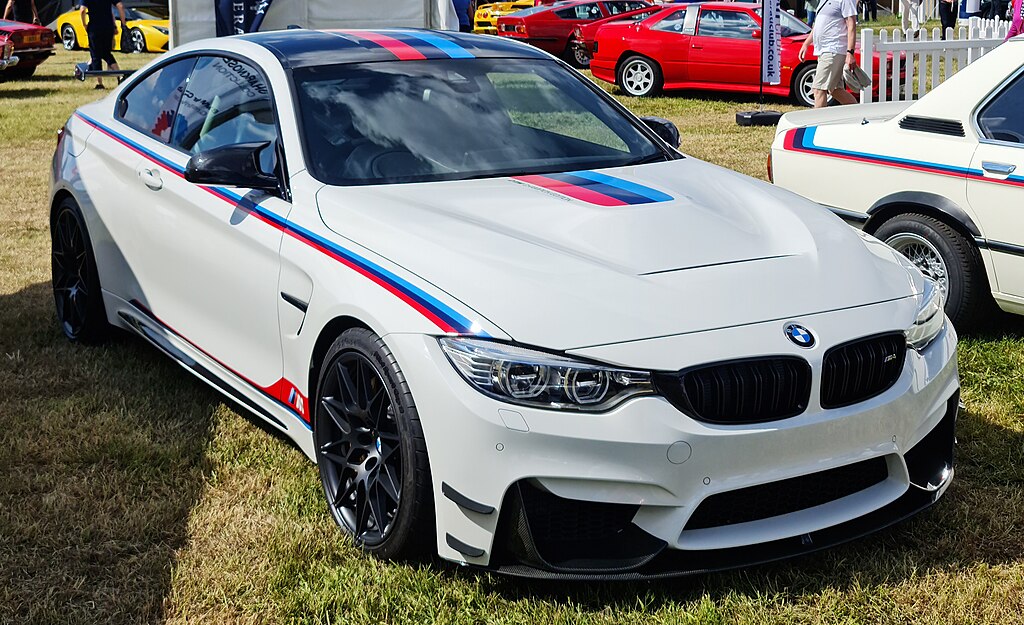 MrWalkr, CC BY-SA 4.0, Wikimedia Commons
MrWalkr, CC BY-SA 4.0, Wikimedia Commons
BMW M4 (Cont'd)
Driving the M4 is like driving a refined M3 with all the modern trappings—carbon fiber engine bracing, carbon fiber roof, and a carbon fiber trunk lid, all intended to reduce weight. Meanwhile, the car will literally park itself thanks to its "self-parking" feature. But you probably won't want to get out of its 10-way adjustable, lumbar-supported sport seating.
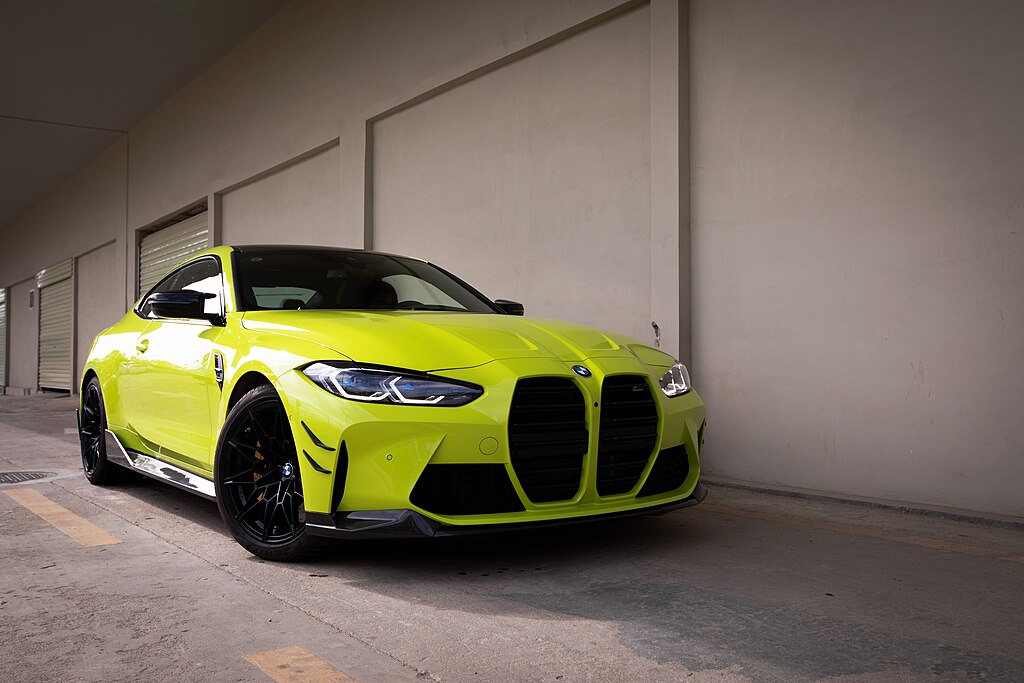 Duboyong, CC BY-SA 4.0, Wikimedia Commons
Duboyong, CC BY-SA 4.0, Wikimedia Commons
1968 Opel GT
Although the Opel GT was revived in 2007, the 1968 version of this sporty classic is the best. Designed by Opel (now owned by GM), the GT borrowed much of its styling from the Corvette Stingray, with the long nose and peaked fenders. Another neat design feature of the Opel GT was its hidden headlights, which are manually operated by a lever in the cockpit. This style of headlight unusually rotated counterclockwise, rather than flipping up like traditional pop-up headlights.
 Lothar Spurzem, CC BY-SA 2.0, Wikimedia Commons
Lothar Spurzem, CC BY-SA 2.0, Wikimedia Commons
1968 Opel GT (Cont'd)
Unusual may have been the name of the game for the outside of the Open GT, but on the inside, it was equipped with a 1.9L cam-in engine that produced 102 hp. It had a top speed of 115 mph but took 10.8 seconds to reach 60 mph. So, it won't win a drag race, but the unique design features of the GT are undoubtedly cool.
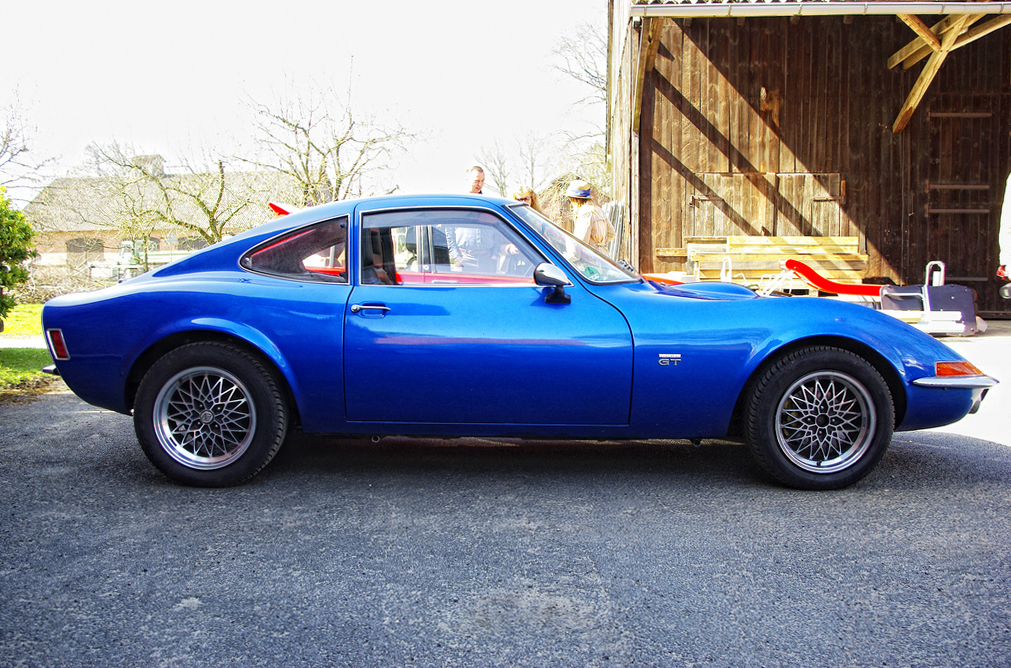 OlliFoolish, CC BY-SA 3.0, Wikimedia Commons
OlliFoolish, CC BY-SA 3.0, Wikimedia Commons
BMW M1
Produced for just three short years between 1978 and 1981, the BMW M1 looks a lot like a Lamborghini Countach. That's because BMW and Lamborghini had originally agreed to build the car together, but the two companies had a falling out that resulted in BMW going it alone. The result was a twin-cam 3.5L six-cylinder engine that produced 273 hp and had a top speed of 162 mph.
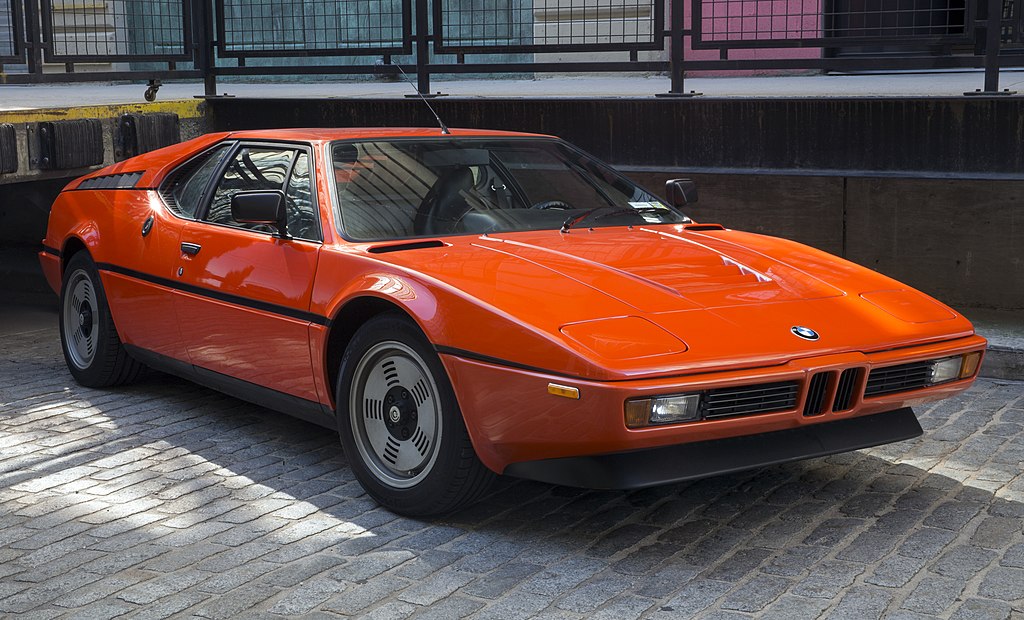 Mr.choppers, CC BY-SA 3.0, Wikimedia Commons
Mr.choppers, CC BY-SA 3.0, Wikimedia Commons
BMW M1 (Cont'd)
Unfortunately, the Lamborghini look-alike supercar fell flat, with BMW only selling 453 cars in three years. It probably wasn't helped by the fact that its wedge-like design and pop-up headlights looked like the Countach, but it didn't pack any of the punch prospective owners may have been looking for.
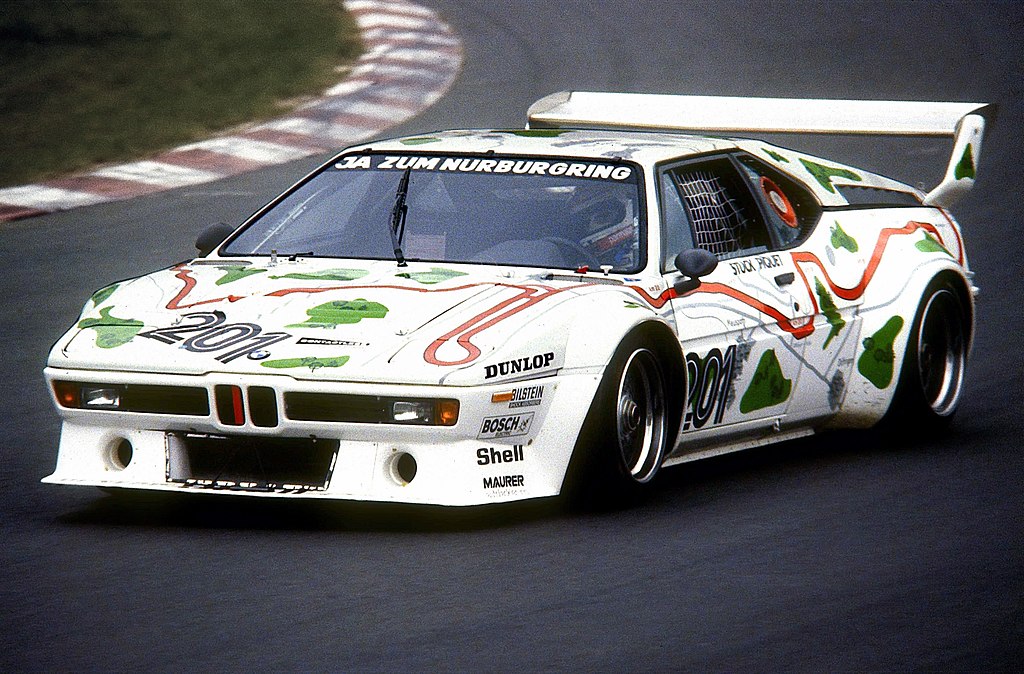 Lothar Spurzem, CC BY-SA 2.0, Wikimedia Commons
Lothar Spurzem, CC BY-SA 2.0, Wikimedia Commons
Porsche Boxster
In the early to mid-90s, Porsche found itself in a bit of a marketing rut: only 3,000 Porsches sold to the United States, and the Germans weren't buying their own brand as often, thanks to stiff competition. Enter: the Porsche Boxster, a mid-engine sports car powered by a 2.5L six-cylinder engine that could hit 60 mph in 6.1 seconds and had a blistering top speed of 149 mph.
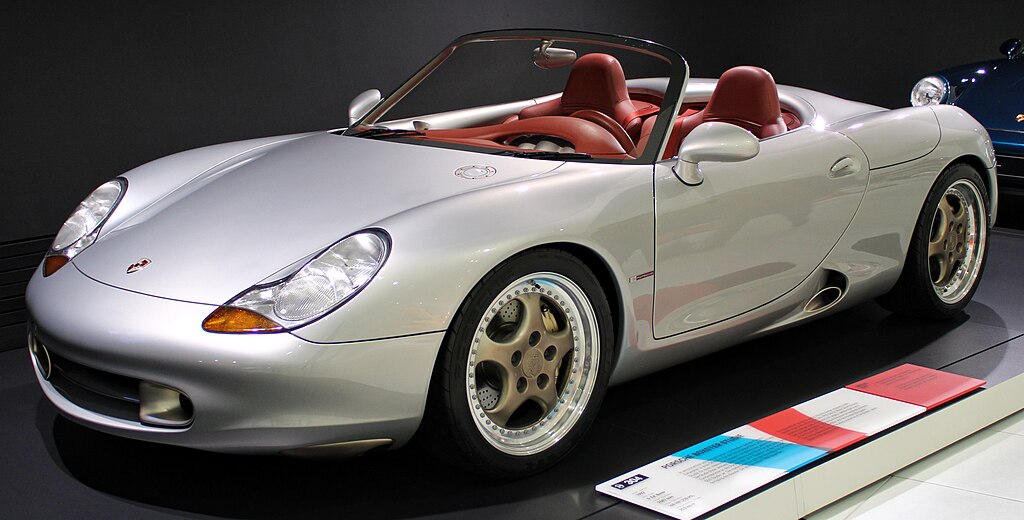 Alexander Migl, CC BY-SA 4.0, Wikimedia Commons
Alexander Migl, CC BY-SA 4.0, Wikimedia Commons
Porsche Boxster (Cont'd)
The Boxster's commercial success proved to be a turning point for the company in the mid-90s, but they weren't without their problems. Specifically, Porsche had to replace the cracked and split cylinder lines on M96 engines and redesign the engine housing. Nevertheless, the Boxster's huge success gave way to Porsche Cayman, a coupé version of the car.
 Vauxford, CC BY-SA 4.0, Wikimedia Commons
Vauxford, CC BY-SA 4.0, Wikimedia Commons
Mercedes SSK Roadster
In 1928, Mercedes produced the SSK Roadster, a two-seater open-top that was graceful but powerful and had unmatched speed. It featured a 7.1 L inline-six engine that produced 140 hp and included a supercharger that brought the engine up to 200 hp. A four-speed manual transmission gave the SSK an astonishing top speed of 115 mph. It was the fastest car of its era.
 Thesupermat, CC BY-SA 3.0, Wikimedia Commons
Thesupermat, CC BY-SA 3.0, Wikimedia Commons
Mercedes SSK Roadster (Cont'd)
The SSK Roadster was (and remains) a very special car. Only 31 SSKs were produced in three years—by this time, Mercedes had been putting out 9,000 cars per year, but most were owned by celebrities. In 1931, Mercedes released the SSKL, a lighter-weight, faster version of the SSK that could achieve 240 hp, or a staggering 300 hp with a supercharger. It could reach speeds of 146 mph, the fastest car of the 1920s and 1930s.
 Charles, CC BY 2.0, Wikimedia Commons
Charles, CC BY 2.0, Wikimedia Commons
Porsche 911
And of course, easily the greatest, most iconic car that Germany has ever produced: the Porsche 911. Sketched out by Ferdinand Porsche in 1959, as a more comfortable, longer, and more powerful replacement for the 356, the 911 was built by 1964. It featured a 2.0L flat-six engine that produced 130 hp. Its styling was unique: a sloping hood, round headlights, curved wheel arches, and a sloped rear-end.
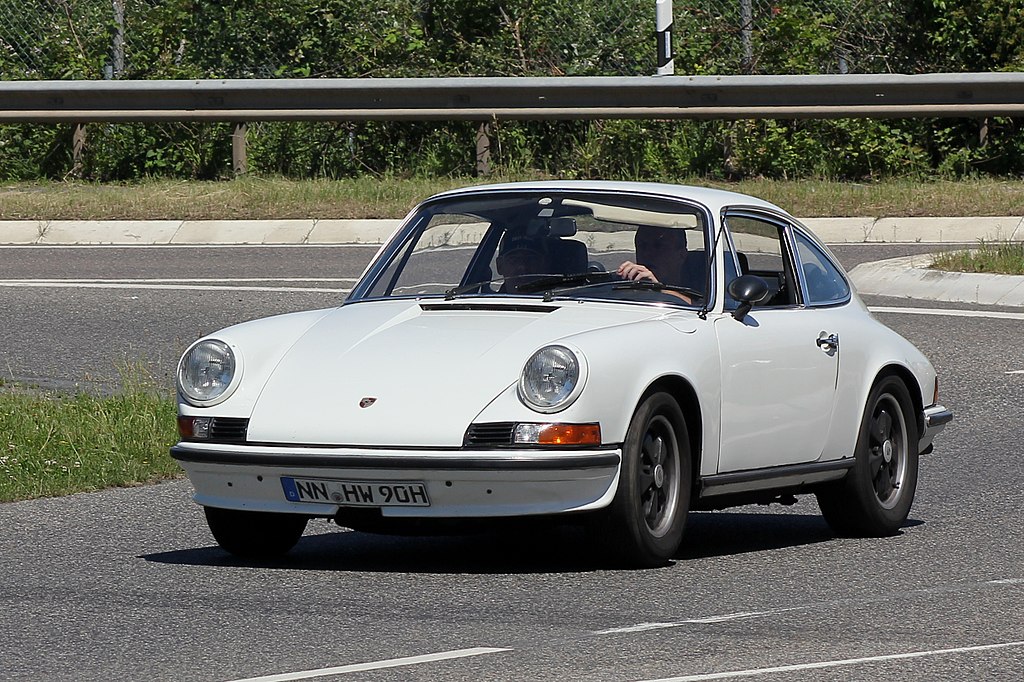 Lothar Spurzem, CC BY-SA 2.0, Wikimedia Commons
Lothar Spurzem, CC BY-SA 2.0, Wikimedia Commons
Porsche 911 (Cont'd)
Throughout the 1970s, Porsche dominated racing in their 911-derived cars, winning everything from Le Mans to Daytona races. In 1998, Porsche changed the engine design from an air-cooled system to a water-cooled system, which enabled the car to handle higher temperatures more easily, making it much easier for Porsche to create higher-powered versions of the 911. The 911 was ranked as the fifth-best car of the century in 1999, with the one millionth car rolling off the production line in May 2017.
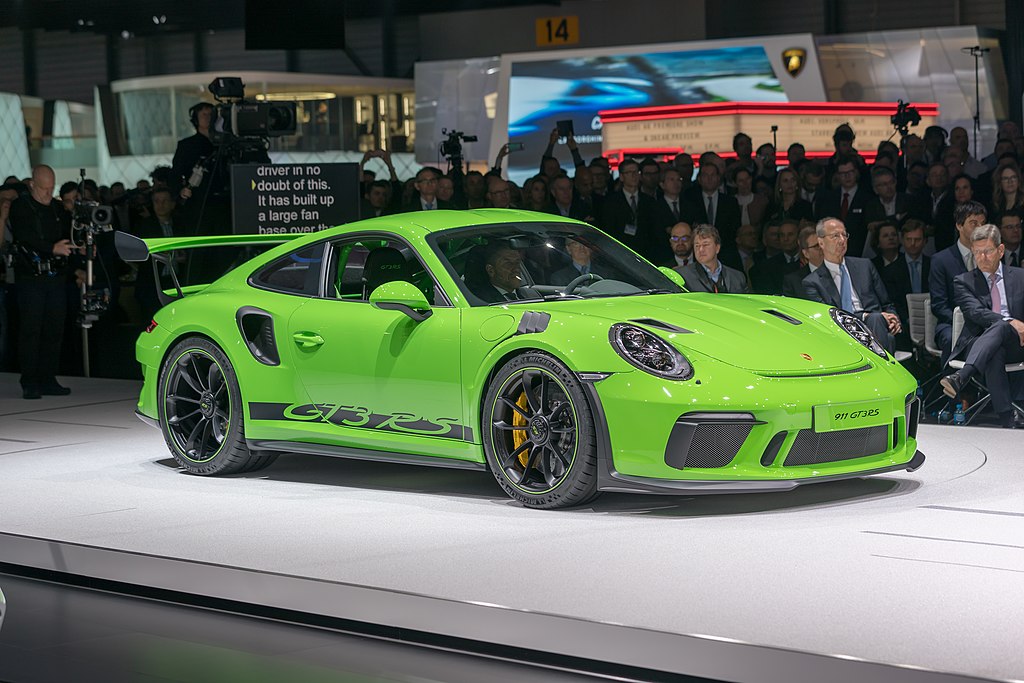 Matti Blume, CC BY-SA 4.0, Wikimedia Commons
Matti Blume, CC BY-SA 4.0, Wikimedia Commons
Which Of These German Cars Have You Owned?
While there are many high-performance models among our list, there's also a great many everyday vehicles, like the VW Golf and Beetle, or the BMW 3 and 5 Series. Which of these cars have you owned? Do you have a favorite German manufacturer? Let us know in the comments.
You May Also Like:
The Most Impressive Cars You Probably Failed To Notice
The Best Ferraris & Lamborghinis From The Decade You Were Born
The Most Revolutionary Cars Of The 20th Century
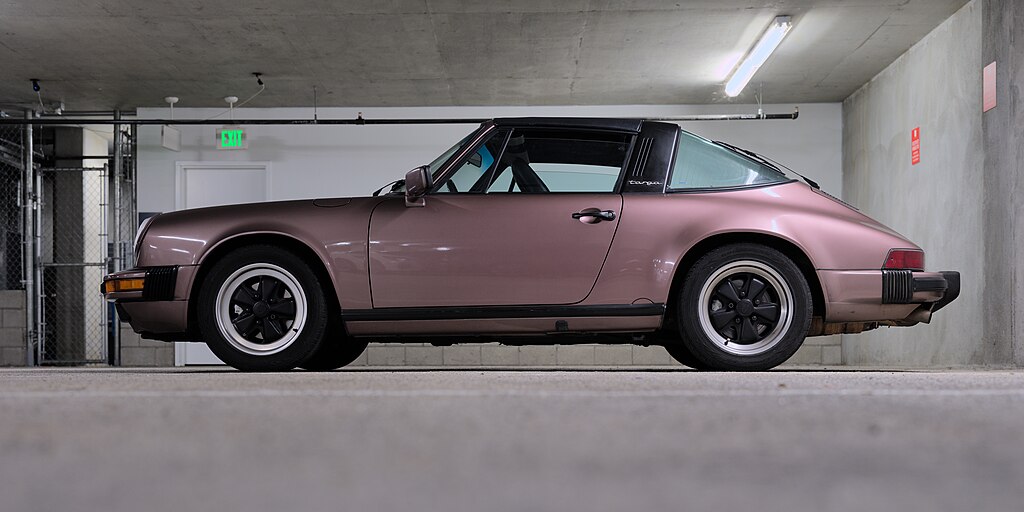 Dllu, CC BY-SA 4.0, Wikimedia Commons
Dllu, CC BY-SA 4.0, Wikimedia Commons
Sources:


